What’s not to love about old houses and their extensive history and timeless beauty? While we understand the appeal, living in an older home may cause a few problems– such as your circuit breaker being unable to meet your electrical needs.
If that’s the case, you may need to shell out costs to replace or upgrade your electrical panel at home.
Several older boxes prove to be unsafe today, putting you at risk of an electrical fire. And with the continued increase of electric use in recent years, this may have put a heavy strain on your old system. Whatever the reason is, an electrical panel upgrade is one valuable investment given its added functionality and improved safety benefits.
Electrical Panel Replacement Cost Overview
Since there are different ways to replace your existing panel, expect a wide range of estimated costs to replace an electrical panel.
On average, homeowners spend around $1,725 to $4,600 replacing their old panels with a new model and housing. The cost to replace a 100 amp electrical panel without housing may only cost you as low as $920. Meanwhile, upgrading your system to 400 amp (with new housing) may run for as much as $5,175.
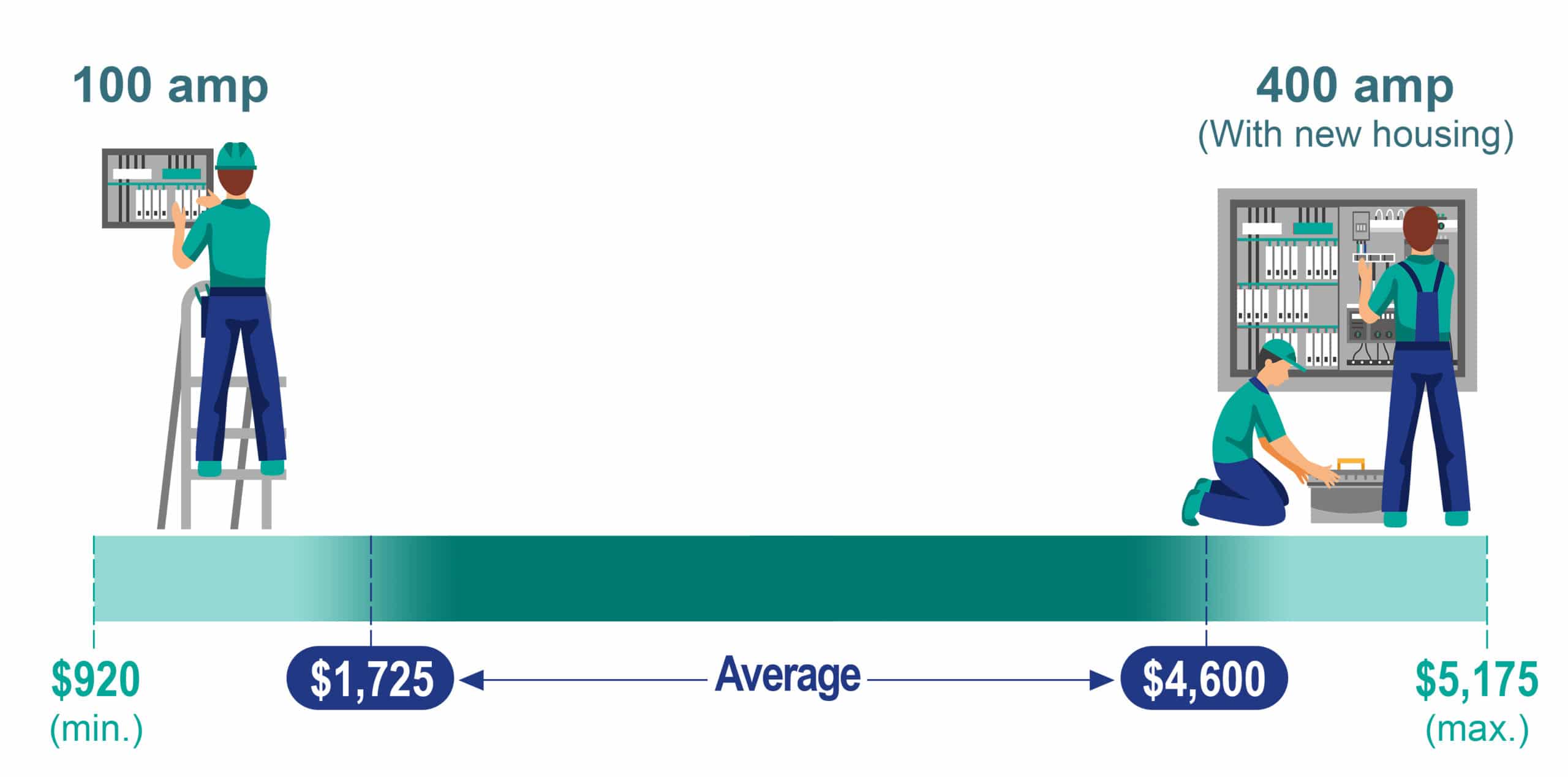
Now that you are sure about upgrading, replacing, or adding more electrical work to your home, let’s discuss all the price factors involved to prepare your budget accordingly.
Factors Affecting Electrical Panel Replacement Costs
There is no uniform price estimate when it comes to the cost to have an electrical panel replaced. Since the expenses vary on a case-to-case basis, here are some influential variables you might want to look out for.
System Upgrade
If you live in an old house, chances are– your panels may fall short of meeting your current electrical needs. Have you noticed flickering lights more often lately? How about new appliances failing to run at maximum efficiency? These are only some of the tell-tale signs you need an electrical system upgrade. For instance, if you are still on an 80 to 100 amp panel, you may benefit from jumping to a 150 amp unit upgrade.
If you want a foolproof upgrade, a 200 amp system will effectively power several appliances at once without straining the entire system. Here are the most common system upgrades you may want to consider:
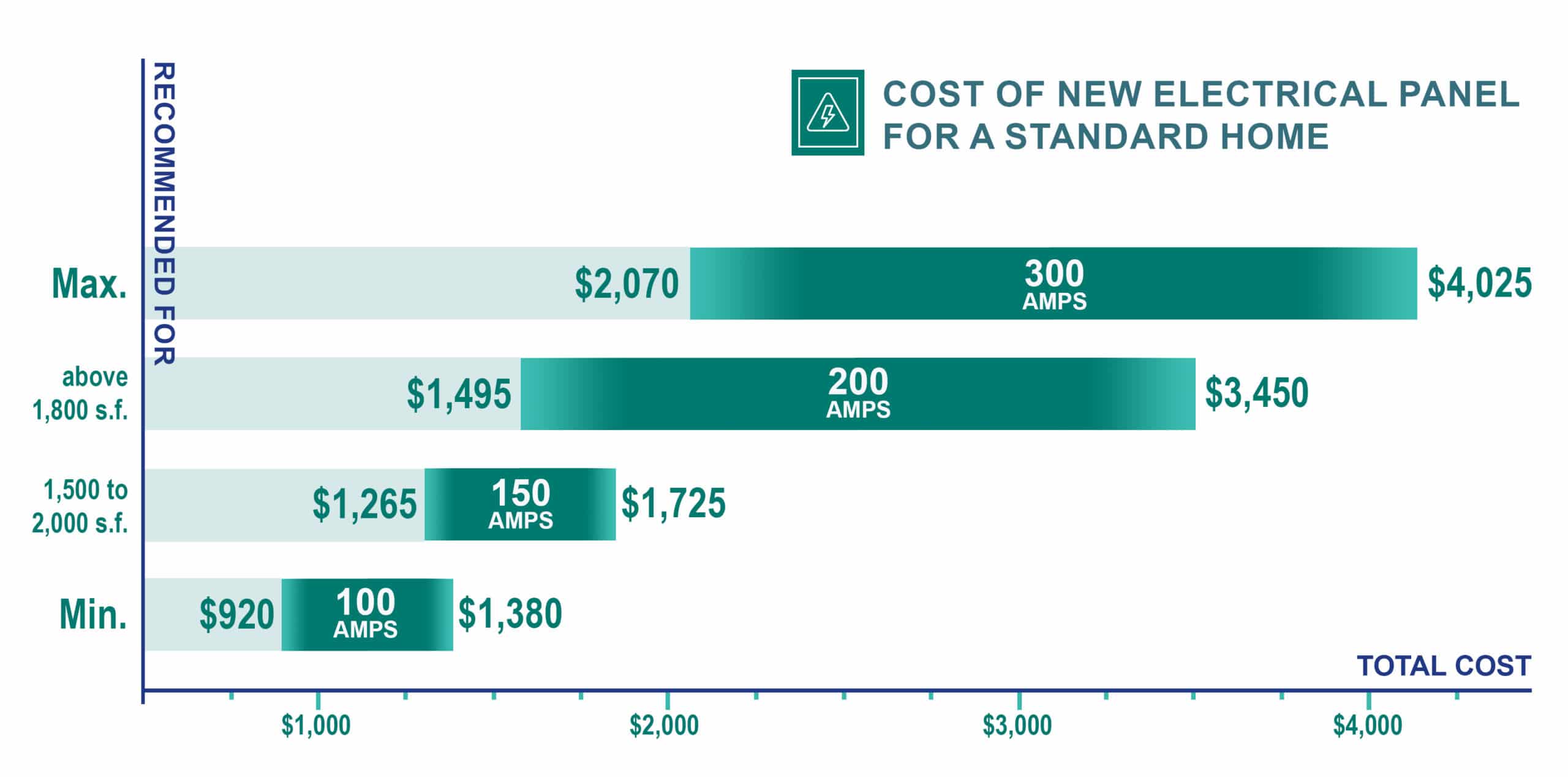
Labor Costs
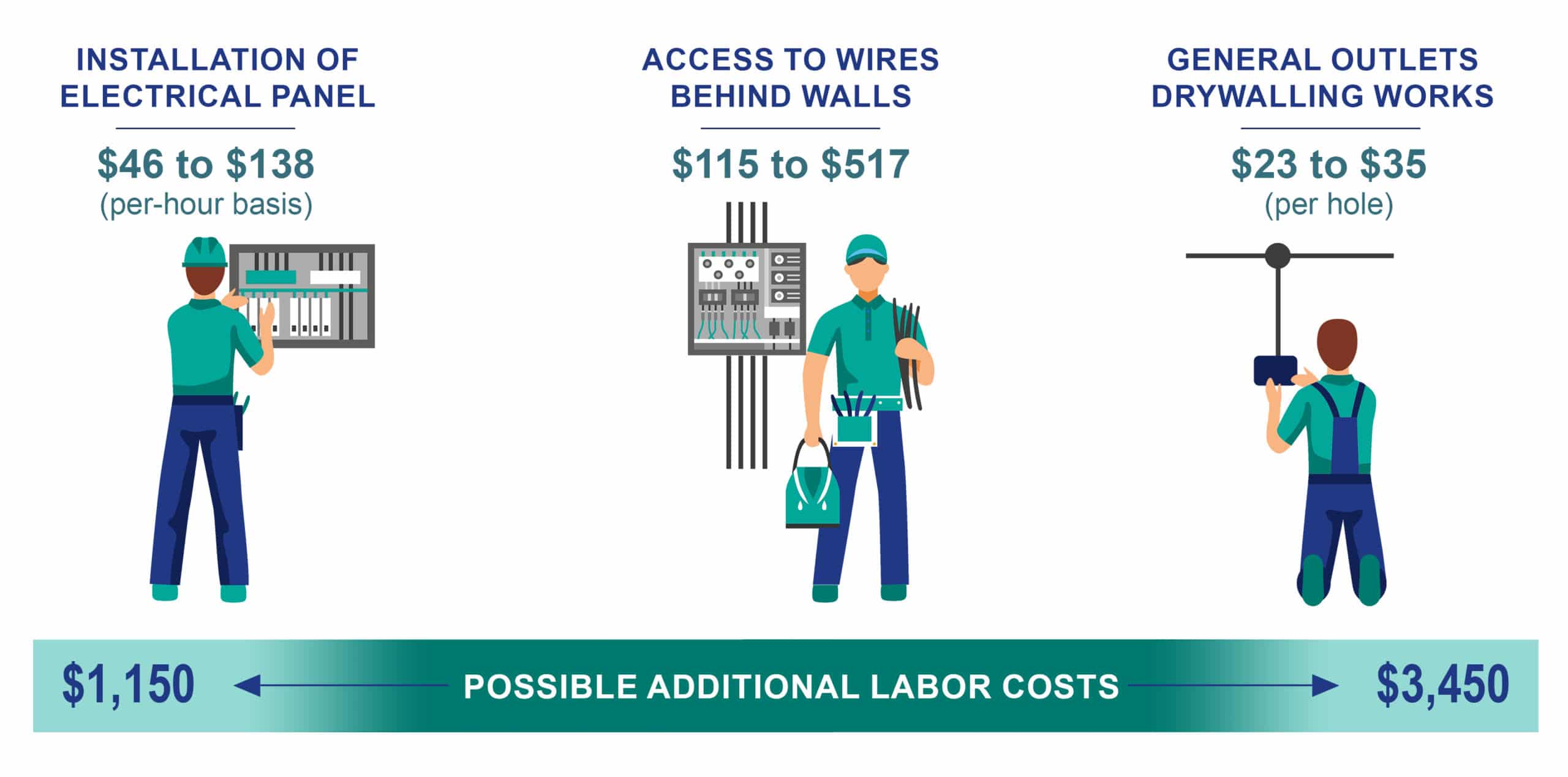
Perhaps the most defining factor in an electrical panel replacement is the local labor costs. On average, electricians charge from $46 to $138 on a per-hour basis. Installation lasts for a minimum of 8 hours of work, or in some cases– may last for a few days. It is especially true if the severity of the project is quite complex.
It’s best to prepare for the additional costs, which may add up to $1,150 to $3,450 per project. If your electrician needs to access the wires situated behind walls, this may cost you an extra $115 and $517. The added expenses will depend on your home’s layout. Additional drywall work is required if more switches or outlets need to be installed in the system. General drywalling work costs about $23 to $35 per hole.
Keep in mind that this type of work needs to be spearheaded by a licensed electrician or electrical panel professional. Improper placement or positioning of the wires may just put your property at risk of a fire.
You may be surprised by the costs of professional electric services, but remember you are paying for expert electrical skills to ensure your safety.
Electrical Panel Components
Every electrical panel replacement project has different components put into play. In some cases, you may not need to replace the entire box. If you have a damaged circuit breaker switch– you may only be required to replace the said switch.
Your electrician will advise you on the relevant components that need replacing after testing each piece. With that in mind, the total cost to have the electrical panel replaced will heavily depend on the parts you need to change.
Listed below are the most common parts of an electrical panel and their average replacement costs:
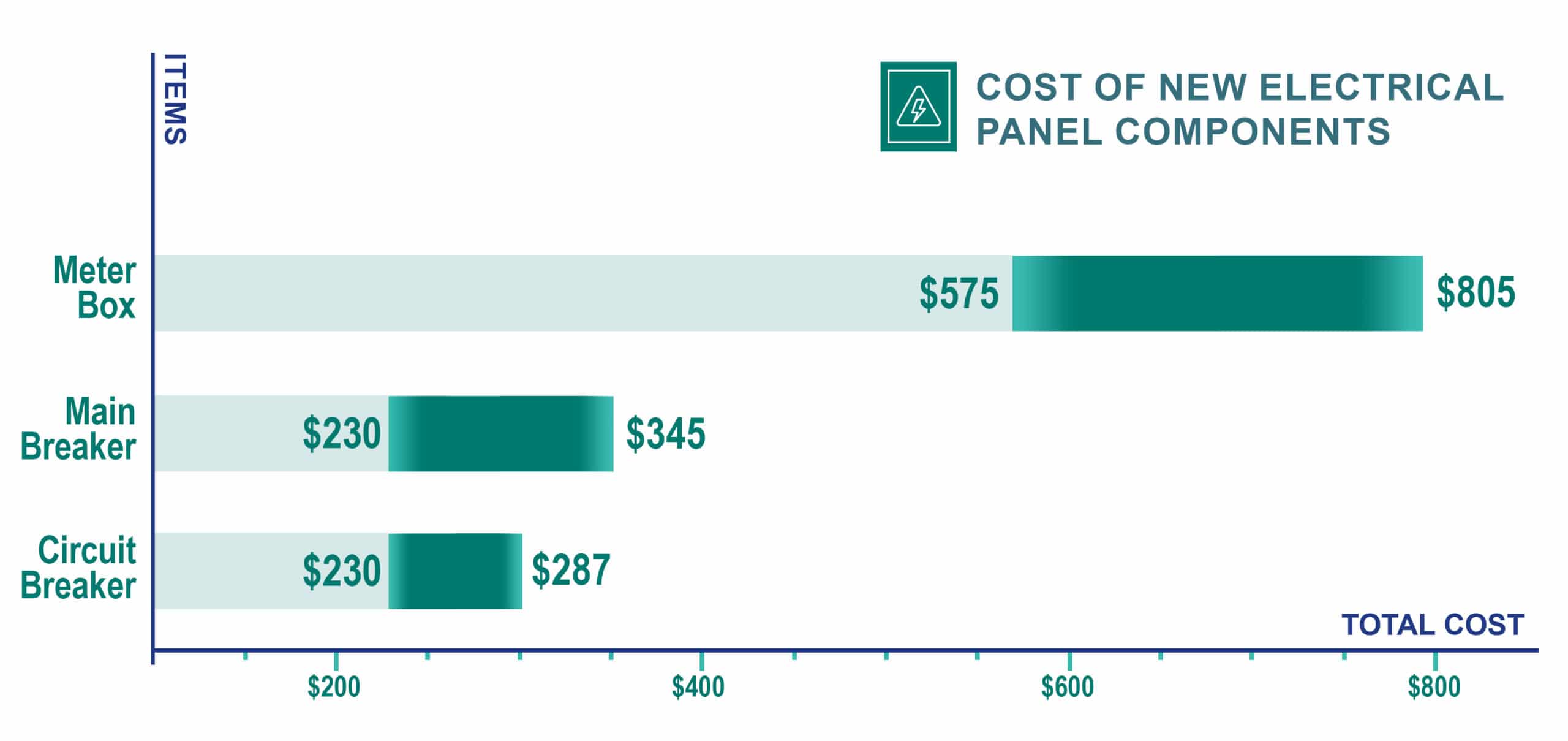
Electrical Inspection
An electrical inspection is done by an electrician or licensed home inspector, which helps you determine the extent of work needed for your electric panel replacement. (Related: Mandatory Fixes After A Home Inspection)
It will cost you around $86 to $115 on average, with larger homes priced at $143. Usually, it involves a virtual assessment of your current electrical panel as well as circuit testing. The process may take as fast as 15 minutes to 1 full hour. It depends on the severity of the work and the expertise of your contractor.
In some areas, you may be required to contact the local building code inspector to check on your project. Doing so ensures your electrical panel replacement follows code and standard practices.
Moving or Relocation
If there are any accessibility issues in your panel, this may only add to the total project expenses. Local codes and regulations may require your electric panel replacement to follow specific areas to meet the code. In this case, you may need to move your system accordingly.
Keep in mind that this usually takes a few days to complete. Total project costs may depend on how far you need to move the system and the selected ampere upgrade. Relocating your electrical panel will start at $1,150, up to $4,600 if your electrician needs to do a lot of rewiring work.
Rewiring
In all electrical replacement projects, you will most likely need to rewire your residential panels. Keep in mind that panels manage all the wires in your household. You may need to replace one or two circuits at once, which requires less wiring than a total wiring system replacement.
It cost $575 to $5,175 on average, depending on the number of wiring work you need to update. Suppose you need two breakers to rewire. The total expenses will be lower on your end. It will only take three hours maximum, at $46 to $138 per hour.
Electrical Panel Size
Hiring an electrician means you’ll have a reference when it comes to determining the right electrical panel size for your needs. The majority of households (up to medium-sized homes) need at least a 100 amp system to cater to all their appliances.
If you have several appliances that require additional power, you may benefit from upgrading to a 150 to 200 amps system.
Indoor vs. Outdoor Electrical Panel
Both indoor and outdoor electrical panels work the same way and will cost you just the same. Outdoor electrical panels can stand severe weather conditions, making them less likely to be damaged by heavy rains or freezing temperatures. It is ideal for outdoor structures, including gazebos, pools, or saunas.
Let’s say you want to transfer your indoor electrical panel system outdoors. It will cost you somewhere between $4,600 and $10,350. Your electrician will need to do a total home rewiring, remove your old system, and install a new box outdoors.
AFCI vs. GFCI Breakers
Generally, there are two types of breakers: AFCI (Arc Fault Connection Interrupters) and GFCI (Ground Fault Connection Interrupters). AFCI breakers (between $28 and $69) ensure your house’s safety from possible fires due to faulty circuits or wiring. These are usually found in most rooms.
Meanwhile, GFCI breakers (from $40 to $57) offer protection from potentially fatal electric shocks. It is commonly located in wet rooms, including the bathroom, kitchen, and laundry areas.
It is ideal for your home electrical circuit box to give you both improved safety features. Both breaker types are designed with a built-in reset. Once you notice it has tripped, don’t forget to push the reset button.
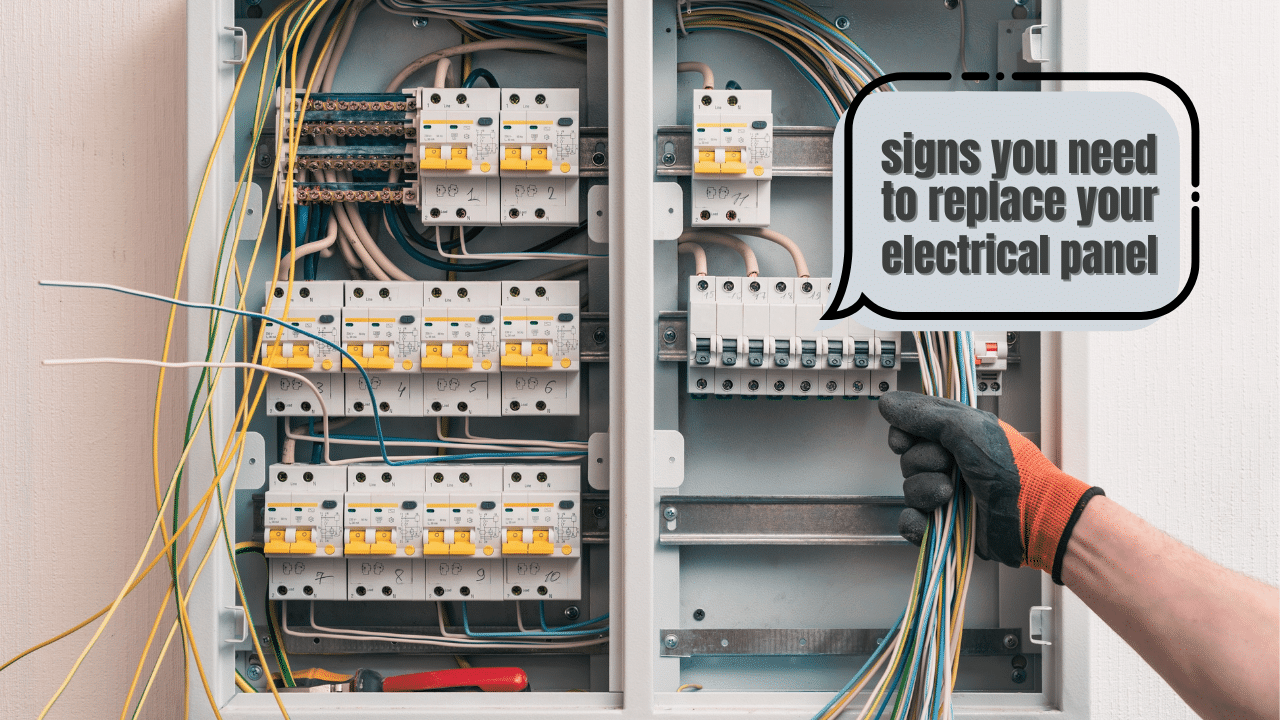
When Should I Consider Electrical Panel Replacement?
If you’re running more appliances than you previously were, chances are you will need to replace your current electrical panel. Every household needs to have a suitable power source. So if your panel is outdated, it may be at risk of overloading or malfunction.
Here’s a quick overview to determine if whether or not you need to replace your electrical system:
If any of these apply to your current situation, you may need to replace your breaker box at home. Doing so will help protect electrical fires, push your appliances to achieve maximum efficiency, and improve the value of your property.
